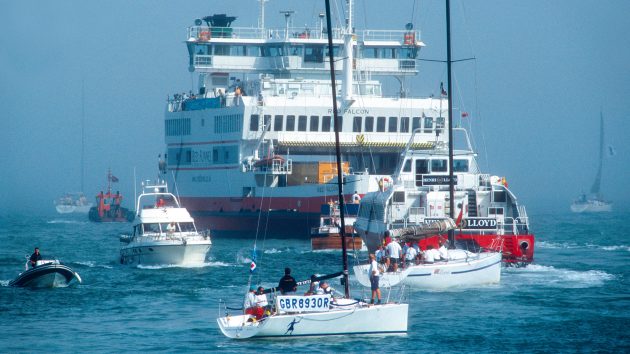Author of the Yachtmaster Handbook, James Stevens, answers a tricky question on setting off in fog for one Yachting Monthly reader
Ben is skipper of Leading Light, an 11-metre yacht currently moored in a marina in Cowes on the Isle of Wight. He has two crew.
It is early morning in late August and Ben has prepared a passage to Saint Vaast-la-Hougue, a port on the east side of the Cherbourg peninsular about 85 miles away.
His intention is to depart at 0800 to take the east-going tidal stream out of the eastern Solent, cross the Channel and pick up the next east-going tide off Barfleur which will be favourable down to St Vaast.
It will be a flood tide at St Vaast so Leading Light will arrive just as the lock gates open.
The weather yesterday was hot and sunny with high pressure centred over southern England. The inshore forecast today for that part of the English coast is for light and variable winds and fog patches. The shipping forecast is easterly Force 2-3 and fog patches.
Article continues below…
With a ripped mainsail would you turn back or carry on?
James Stevens answers your Questions of Seamanship. In this article, with a ripped mainsail would you continue sailing from Ireland…
Which is the best approach for Guernsey?
The RYA's former Yachtmaster chief examiner, James Stevens answers your questions of seamanship. This month, which is the best route…
Ben is fretting because where he is in Cowes there is fog, about 0.1-mile visibility. On passage he has to cross the Channel shipping lanes. Leading Light has a new chartplotter with a display at the wheel and AIS, but no radar.
Ben knows that if he delays, the tides will be foul both for leaving the Solent and more importantly off Barfleur where the stream can run at 4-5 knots. If he misses the lock gate opening it’s about a five-hour wait.
If you were in Ben’s shoes would you depart at 0800?
Should Ben set off in Fog – Answer
The poor visibility in still, high pressure conditions is radiation fog. This forms as air over the land cools on clear nights after a sunny day.
It then drifts down to rivers and estuaries and a short way out to sea. Radiation fog is generally at its worst just before dawn but once the sun rises it usually starts to disperse so that later in the morning it disappears.
It will also disperse if there is a breeze. It is only a problem close to the land, offshore the conditions will be clear.
In the case of the Solent, although visibility is poor in Cowes, if Ben left at 0800, by the time he reached the eastern end of the Solent the fog should be clearing and stay clear across the Channel. He might be able to sail when the wind is against the tide, but it is likely that most of the passage will be under power. On the French side the visibility should be good during the day.
My view is that he should go at 0800 while taking great care to keep outside the shipping lanes and keeping a very good visual and listening watch along with all the recommended precautions for fog.
In this situation it is really important that Ben knows that the poor visibility on this occasion and in this location is the result of radiation fog and not advection or sea fog which is caused by warm moist air moving over cold water.
Enjoyed reading this?
A subscription to Yachting Monthly magazine costs around 40% less than the cover price.
Print and digital editions are available through Magazines Direct – where you can also find the latest deals.
YM is packed with information to help you get the most from your time on the water.
-
-
- Take your seamanship to the next level with tips, advice and skills from our experts
- Impartial in-depth reviews of the latest yachts and equipment
- Cruising guides to help you reach those dream destinations
-
Follow us on Facebook, Twitter and Instagram.







